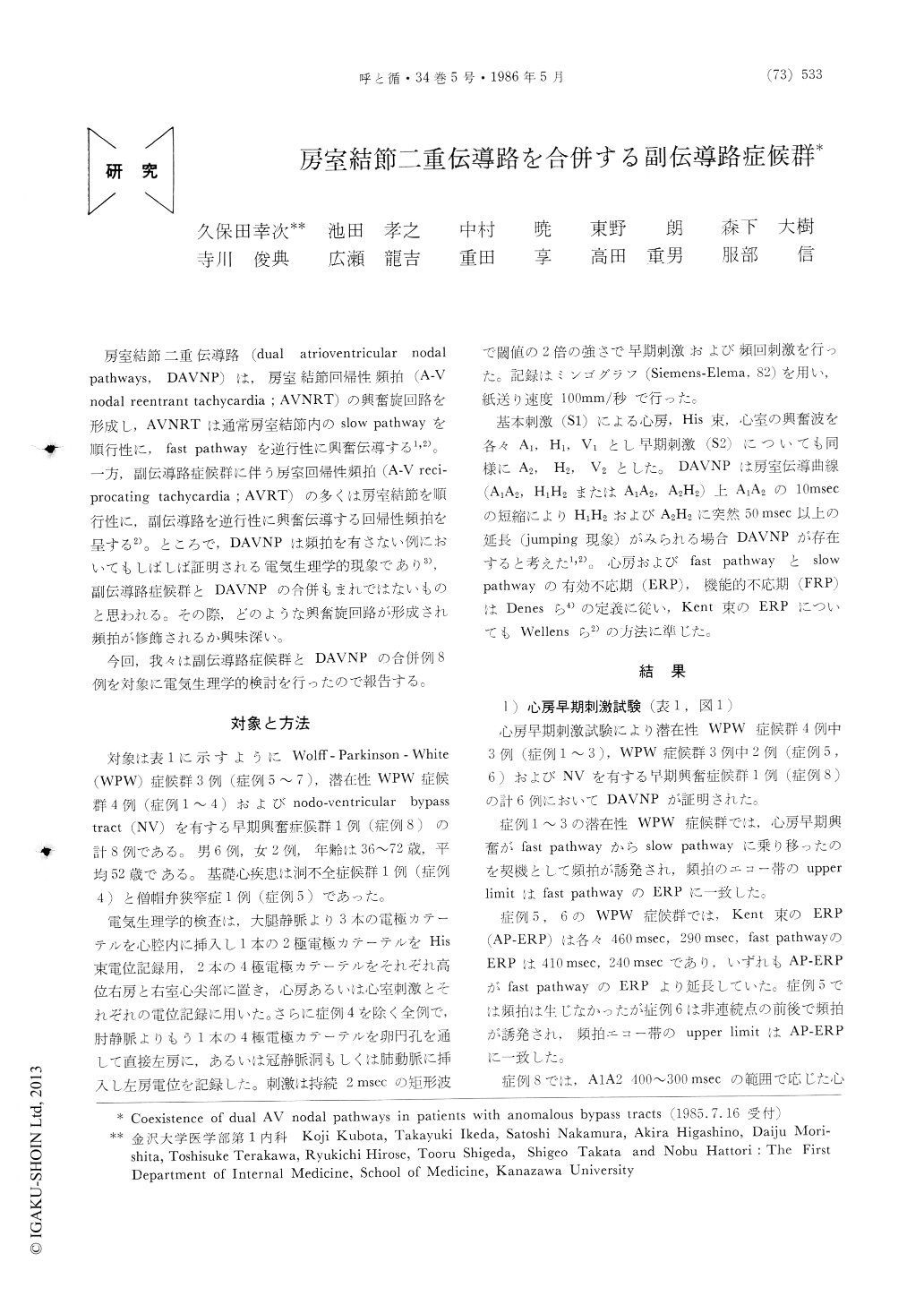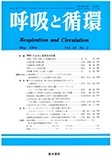Japanese
English
- 有料閲覧
- Abstract 文献概要
- 1ページ目 Look Inside
房室結節二重伝導路(dual atrioventricular nodalpathways,DAVNP)は.房室結節回帰性頻拍(A-Vnodal reentrant tachycardia;AVNRT)の興奮旋回路を形成し,AVNRTは通常房室結節内のslow pathwayを順行性に,fast pathwayを逆行性に興奮伝導する1,2)。一方,副伝導路症候群に伴う房室回帰性頻拍(A-Vreci—procating tachycardia;AVRT)の多くは房室結節を順行性に,副伝導路を逆行性に興奮伝導する回帰性頻拍を呈する2)。ところで,DAVNPは頻拍を有さない例においてもしばしば証明される電気生理学的現象であり3),副伝導路症候群とDAVNPの合併もまれではないものと思われる。その際,どのような興奮旋回路が形成され頻拍が修飾されるか興味深い。
今回,我々は副伝導路症候群とDAVNPの合併例8例を対象に電気生理学的検討を行ったので報告する。
In the present study eight patients with an anomalous atrioventricular (AV) or nodoventricular (NV) bypass tract were suggested the coexistence of dual AV nodal pathway conduction.
In six patients, discontinuous AV nodal conduction curves (A1A2, H1H2) were generated during program med atrial extrastimulation. In three out of those six patients, paroxysmal supraventricular tachycardia was a typical reentrant arrhythmia which used the AV node for conduction in the antegrade direction and an acces-sory pathway for conduction in the retrograde direction. In one patient with discontinuous AV nodal conduc-tion curves, alternating short and long AV nodal con-duction time, presumably caused by rate-dependent 2: 1 conduction in the fast AV nodal pathway, were recorded during AV reciprocating tachycardia. In one patient with an anomalous NV bypass tract bridging the slow AV nodal pathway and the right ventricle, two types of sustained reciprocating tachycardia with a complete left bundle branch block pattern were observed using the slow AV node-NV bypass tract pathway for anteg-rade conduction and the fast AV node-His-Purkinje system pathway or the distal common AV node-His-Purkinje system pathway for retrograde conduction. In the remaining patient with dual AV nodal pathway conduction, any type of reciprocal tachycardia was not induced.
In two patients, discontinuous AV nodal conduction curves were not generated by atrial extrastimulation. In one of those two patients, however, alternating short and long AV nodal conduction time during AV reci-procating tachycardia were observed. In the other pa-tient, two types of reciprocating tachycardia were observed using the slow AV node or the fast AV nodal pathway for antegrade conduction and the anomalous AV bypass tract pathway for retrograde conduction.
These observations suggest that dual AV nodal path-ways coexisting with an anomalous bypass tract may take several forms. A detailed electrophysiologic analysis is required to identify their coexistence.

Copyright © 1986, Igaku-Shoin Ltd. All rights reserved.


